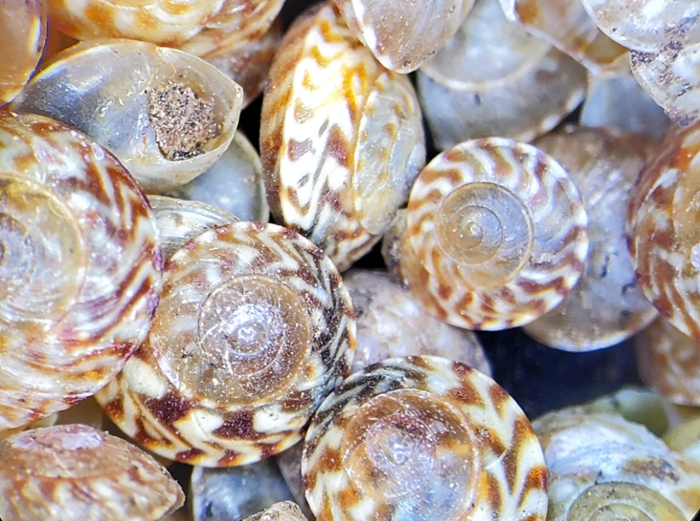New and extinct species of snails found in 30-year-old A&M collection

When Tom Iliffe checked his email a few weeks ago, he never expected to read a message about a collection of 30-year-old snails.
This message came to Iliffe, a professor in the Department of Marine Biology at Texas A&M University at Galveston, from Collection Manager John Slapcinsky of the Florida Museum of Natural History. Slapcinsky was inquiring about a collection of Pacific Island snail samples Iliffe had collected over thirty years ago in the South Pacific.
After the unfortunate passing of a colleague at the museum, Slapcinsky was helping to clean out the vacant office and happened upon a collection of hundreds of lots of snail samples gathered by Iliffe decades prior. He was floored, even giddy.
A snail expert himself, Slapcinsky told Iliffe his collection could include several new species and perhaps the last-known records of now-extinct snails.
“Many Pacific Island land snails are endangered, and if you’re considering extinctions in recent times, half are mollusks, and most are land snails” Slapcinsky explained. “So, we’re working with a consortium of different museums to gather information about collections of Pacific Island land snails because they’re such an endangered group.”
Slapcinsky is hard at work cataloging the specimens Iliffe discovered, but he needed help georeferencing the samples and their respective origins, thus the email.
“I immediately wrote back to John, sending him a copy of my collection notebook from the trip listing the names, location (latitude and longitude), elevation, distance from the coastline, and ecological description of each collecting site. I’m incredibly excited to see where we can go from here with these specimens and the otherwise-irretrievable database they represent,” Iliffe said.
The project was moving forward. Then, the COVID-19 pandemic hit.
Slapcinsky said social distancing couldn’t have come at a more ideal time for him. The scientist took the specimens home and got to work.
“This is the perfect thing to be identifying and studying while stuck at home working,” Slapcinsky said of the so-far 700 samples, representing anywhere from 5,000 – 7,000 individual shells, he’s been busy identifying and cataloging.
The details and descriptions in Iliffe’s notebook are helping Slapcinsky to better source the specimen and shell samples to study existing scientific literature to see if the snails are described somewhere.
“There’s a lot of work involved, doing this. I’m looking through all the literature ever written about this area and this species to see if they have been described. There’s a lot of documenting, detailing and measuring shells,” Slapcinsky said.
In 1987, Iliffe organized a year-long cave exploration expedition across 12 locations in the South Pacific. Iliffe specializes in the evolution and conservation of the biodiverse species inhabiting marine caves, as well as technical diving within the context of extensive cave systems.
He secured funding from the National Science Foundation (NSF) to explore and research underwater caves in Tahiti, the Cook Islands, Tonga, Fiji, Western Samoa, Niue, New Zealand, Southern Australia, Tasmania, New Caledonia, Vanuatu and the Solomon Islands. Iliffe spent roughly one month at each location and collected a substantial number of snail specimens that he detailed in his above-mentioned collection notebook.
During his explorations, Iliffe was in touch with officials at the museum and they encouraged him to collect whatever samples of the understudied animals he could find.
“Sometimes snails fall into cave entrances or shell deposits build up over time. Often, and even at that time, they’re locally extinct or fully extinct, so you would only find deposits in caves,” he said. “I kept a bag in my pocket, would go collect, preserve them appropriately, then be sure to detail everything I could. There was no GPS at that time, so I had topographical maps of the areas where I was. I plotted the areas as accurately as possible and included details about the collection site.”
Iliffe said he was thrilled to be involved in the project, but that part of it was bittersweet.
“These may be some of the last or only collections of these animals ever made,” he said. “I’ve worked with National Geographic on several conservation projects, one of which is a repository of genetic information for animals. We’re trying to leave behind a firm record of what was there. It’s honestly just sad. The problem today is that species are disappearing before we know they even exist, which is likely in this case,” he said.

